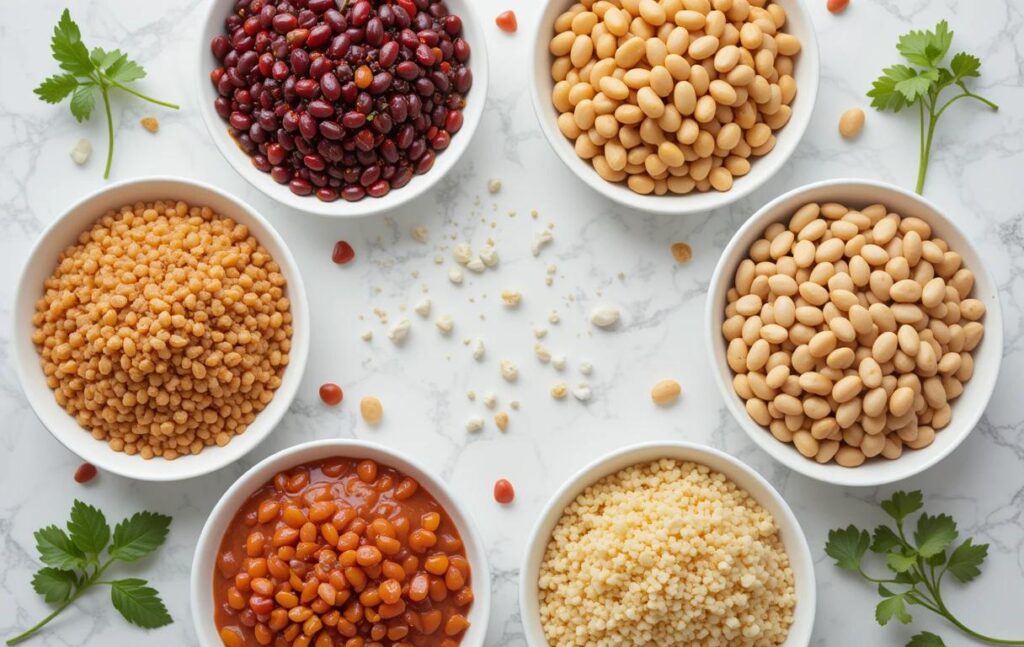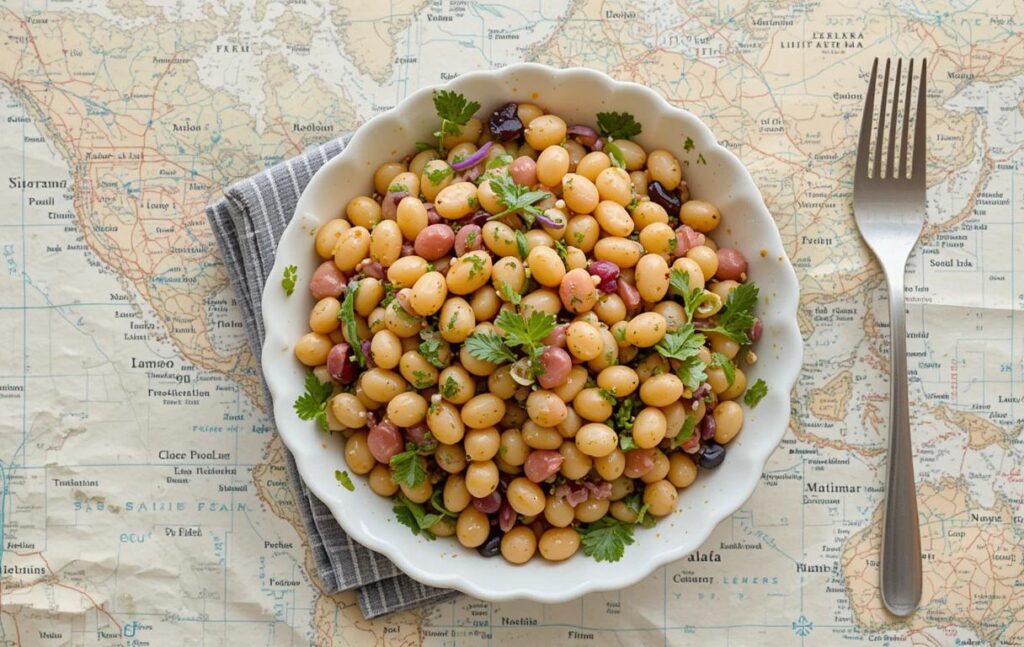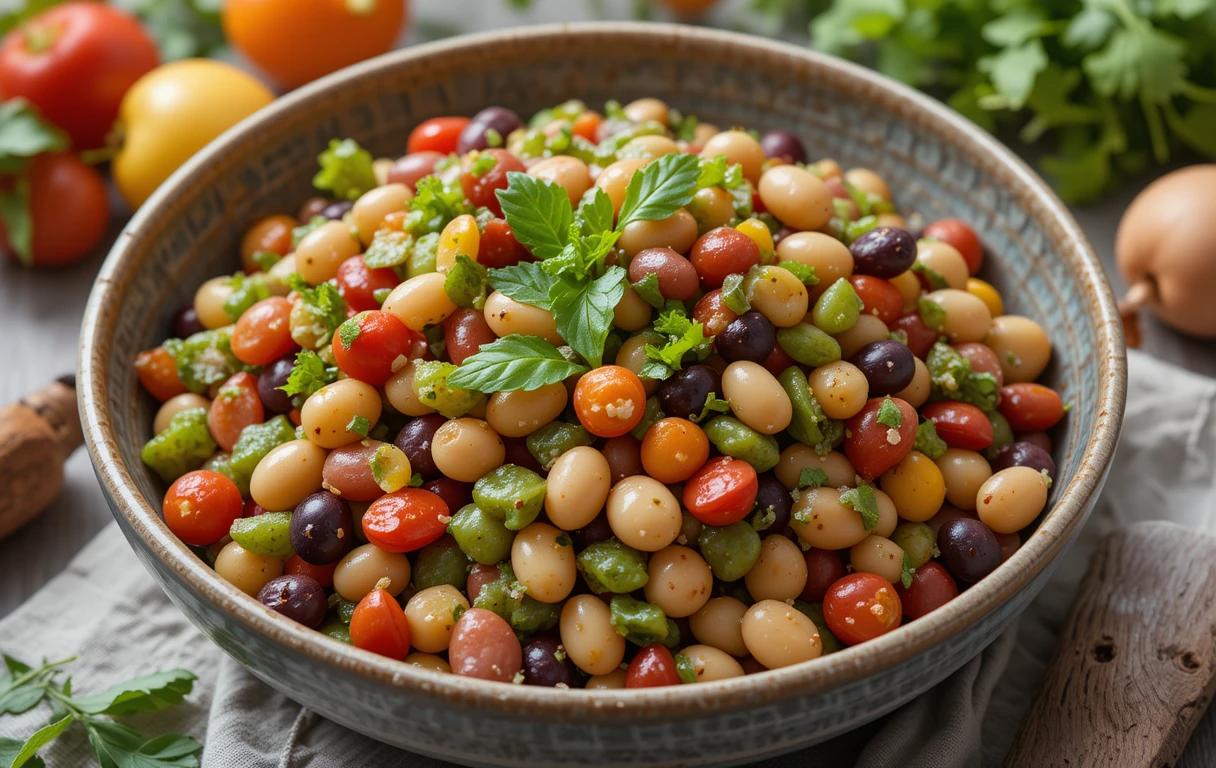Why is it called dense bean salad?
Dense bean salad is one such dish that captures the essence of wholesome eating. Its unique name often sparks curiosity—what makes it “dense,” and why does that matter? The answer lies in its rich combination of ingredients, its satisfying consistency, and its enduring appeal across cultures.
This article dives deep into the origins of dense bean salad, its defining characteristics, and why it continues to be a favorite among health-conscious foodies. Whether you’re new to this dish or a long-time fan, understanding its name gives you a fresh appreciation for its place in the world of culinary delights.
What is Dense Bean Salad?
Dense bean salad is a flavorful medley of beans, fresh vegetables, and a tangy dressing, often served as a side dish or a light main course. The “dense” part of the name refers to its robust composition—every bite is packed with beans, herbs, and complementary ingredients. Unlike leafy salads, which may feel light or airy, this salad has a rich and hearty texture that keeps you full and satisfied.
Key Ingredients of Dense Bean Salad
The hallmark of dense bean salad is its versatility. A variety of beans, such as kidney beans, chickpeas, black beans, and green beans, form the base. The dressing typically combines olive oil, vinegar, lemon juice, and spices, giving it a tangy and refreshing kick.
Why is it Called “Dense”?
The term “dense” goes beyond just the texture—it symbolizes the salad’s depth of flavor and nutrition. Unlike many lighter salads, dense bean salad offers a concentrated mix of protein, fiber, and essential nutrients in every serving. The high proportion of beans to other ingredients also contributes to the name, making it a perfect dish for those who prefer substantial meals.
The History Behind the Name
The Origins of Bean-Based Salads
Beans have been a cornerstone of human diets for thousands of years. Archaeological evidence suggests that beans were first cultivated in Central and South America, as well as parts of the Mediterranean and Asia, dating back to 7000 BCE. Over time, beans became a staple in many cuisines due to their nutritional value, versatility, and long shelf life.
The concept of a bean-based salad evolved naturally as communities sought ways to combine beans with fresh, locally available ingredients. Early versions of bean salads were often simple, using only boiled beans with basic seasonings or vinegar. These dishes offered a convenient way to preserve cooked beans and use them creatively.
Why “Dense” Stands Out
The name “dense bean salad” is tied to the dish’s defining feature: its hearty, tightly packed consistency. Unlike lighter salads with leafy greens, this salad is dominated by beans, which have a substantial, firm texture. The word “dense” aptly describes how every bite is loaded with flavor and nutrition, making it a satisfying and filling option.
The choice of the term “dense” also distinguishes this salad from other bean-based dishes. Many salads mix beans with grains or dilute them with larger amounts of greens. In contrast, dense bean salad is unapologetically bean-forward, emphasizing the ingredient’s starring role.
Culinary Context of “Dense”
In culinary terms, density often refers to a dish’s weight, texture, or richness. A dense dish has little to no “empty space” — every component contributes to the overall experience. Dense bean salad embodies this concept perfectly, with its compact structure and balanced blend of ingredients. The beans’ starchiness, combined with the crunch of fresh vegetables, creates a cohesive texture that defines the dish.
Global Influence on the Recipe
The journey of bean salads across cultures played a role in shaping the dense bean salad we know today. Mediterranean cuisines incorporated olives and feta cheese, while South American versions used black beans and corn. These regional influences contributed layers of flavor and texture, further enhancing the salad’s appeal.
In modern times, the dense bean salad became a favorite at potlucks, barbecues, and casual gatherings, valued for its ability to feed a crowd and adapt to diverse palates. Its name became synonymous with a satisfying, protein-packed side dish.
Cultural Significance
Beyond its practicality, dense bean salad represents a shift in culinary preferences toward healthier, more sustainable eating. With beans as a low-cost, eco-friendly protein source, the dish aligns with modern priorities like reducing meat consumption and embracing plant-based diets.
How Dense Bean Salad is Prepared

Traditional Preparation Methods
Dense bean salad has a straightforward preparation process, yet the results are rich and flavorful. The traditional method revolves around using a variety of beans, fresh vegetables, and a simple yet tangy dressing. Here’s a step-by-step guide to preparing this classic dish:
- Selecting the Beans: Choose a mix of beans such as kidney beans, chickpeas, black beans, or cannellini beans. If using canned beans, rinse and drain them thoroughly to remove excess sodium.
- Preparing Fresh Ingredients: Chop vegetables like red onions, cucumbers, cherry tomatoes, and bell peppers into small, uniform pieces. Herbs like parsley, cilantro, or dill are finely minced to enhance the freshness.
- Making the Dressing: A traditional dressing for dense bean salad includes olive oil, lemon juice, red wine vinegar, Dijon mustard, garlic, and a pinch of salt and pepper. Whisk these ingredients together until emulsified.
- Mixing: Combine the beans and vegetables in a large bowl, pour the dressing over the mix, and toss gently to coat everything evenly.
- Marinating: Let the salad rest for at least 30 minutes in the refrigerator. This allows the flavors to meld together, enhancing the taste.
Modern Twists on the Recipe
The versatility of dense bean salad means it can be adapted to suit different dietary preferences and flavor profiles. Here are some popular modern variations:
- Mediterranean Style: Add ingredients like crumbled feta cheese, Kalamata olives, sun-dried tomatoes, and a sprinkle of oregano for a Mediterranean touch.
- Mexican-Inspired: Incorporate black beans, corn, diced avocado, and a lime-cilantro dressing for a zesty twist.
- Protein Boost: For extra protein, mix in cooked quinoa, roasted tofu cubes, or hard-boiled eggs.
- Spicy Kick: Add diced jalapeños or a dash of cayenne pepper to give the salad a spicy edge.
- Seasonal Variations: Use seasonal produce like roasted sweet potatoes in the fall or fresh asparagus in the spring to make the salad unique year-round.
Tips for the Perfect Dense Bean Salad
- Balance the Ingredients: Ensure there’s a good ratio of beans to vegetables to prevent any one ingredient from overpowering the dish.
- Use Fresh Herbs: Fresh herbs add a bright and aromatic quality to the salad, elevating its flavor.
- Experiment with Textures: Add crunch with toasted seeds or nuts like sunflower seeds, pumpkin seeds, or chopped almonds.
- Make Ahead: Dense bean salad is an excellent make-ahead dish. Preparing it a day in advance intensifies the flavors, making it even more delicious.
- Serve Chilled: For the best experience, serve the salad cold or at room temperature.
Nutritional Value of Dense Bean Salad
Packed with Protein and Fiber
Dense bean salad is a powerhouse of nutrients, making it a favorite among health enthusiasts. Its primary ingredient—beans—are celebrated for their high protein and fiber content. These two elements work together to create a filling and satisfying dish that supports overall health.
- Protein Power:
Beans are a rich source of plant-based protein, essential for building and repairing body tissues. For vegans and vegetarians, dense bean salad serves as an excellent alternative to meat-based protein sources. A cup of mixed beans can provide up to 15 grams of protein, helping meet daily protein needs. - Fiber Boost:
Fiber plays a critical role in maintaining digestive health and keeping cholesterol levels in check. Dense bean salad, with its assortment of beans and vegetables, delivers a significant amount of dietary fiber, often meeting or exceeding 25% of daily requirements in a single serving. This fiber helps promote satiety, which can aid in weight management.
Rich in Essential Micronutrients
Beans and vegetables contribute a variety of vitamins and minerals to the dense bean salad. These nutrients support key body functions:
- Iron:
Beans like kidney beans and chickpeas are high in iron, which is vital for transporting oxygen throughout the body and preventing anemia. - Folate:
Folate, found in beans and leafy herbs, supports cell function and tissue growth. This nutrient is particularly important for pregnant women. - Potassium:
Beans are naturally rich in potassium, which helps regulate blood pressure and maintain heart health. - Antioxidants:
Vegetables like tomatoes and bell peppers, commonly added to dense bean salad, are packed with antioxidants like Vitamin C and beta-carotene. These help reduce inflammation and combat free radicals.
Low in Fat, High in Energy
Dense bean salad is naturally low in fat, with healthy fats coming primarily from olive oil in the dressing. This makes it a great option for those seeking to limit saturated fat intake while still enjoying a flavorful dish. Despite being low in fat, the combination of beans and veggies provides a steady source of energy due to the complex carbohydrates present in beans. These carbs are digested slowly, preventing blood sugar spikes and crashes.
Health Benefits of Dense Bean Salad
- Heart Health:
The fiber and potassium in dense bean salad contribute to improved heart health by lowering bad cholesterol levels and maintaining healthy blood pressure. - Weight Management:
Thanks to its high fiber and protein content, this salad keeps you feeling full for longer, reducing the likelihood of overeating. - Blood Sugar Regulation:
Beans have a low glycemic index, meaning they release sugar into the bloodstream gradually. This makes dense bean salad a suitable option for those managing diabetes or trying to maintain stable energy levels throughout the day. - Gut Health:
The fiber in beans acts as a prebiotic, feeding healthy gut bacteria and supporting digestive wellness.
Dietary Compatibility
Dense bean salad aligns with various dietary preferences and restrictions, making it a versatile dish:
- Vegan and Vegetarian: 100% plant-based.
- Gluten-Free: Naturally free from gluten, as long as cross-contamination is avoided.
- Low-Calorie: A great choice for calorie-conscious eaters, especially when served as a light meal or side dish.
Popularity Around the World

Regional Variations of Bean Salad
Dense bean salad has transcended borders and become a global favorite, with each culture putting its unique spin on this hearty dish. These variations reflect the diversity of ingredients and flavors found across different regions.
- Mediterranean Bean Salad:
Mediterranean versions often include cannellini or fava beans, paired with olives, cherry tomatoes, red onions, and a zesty lemon-oregano dressing. This variation emphasizes fresh, vibrant flavors and often includes feta cheese for a creamy element. - Latin American Bean Salad:
In Latin America, dense bean salads typically feature black beans, corn, diced bell peppers, and cilantro. A lime-cumin dressing adds tang and spice. Avocado is often included, contributing a rich texture and healthy fats. - Asian-Inspired Bean Salad:
Asian twists on dense bean salad incorporate edamame, mung beans, and shredded carrots, often with a sesame-soy vinaigrette. Toppings like toasted sesame seeds or crushed peanuts add crunch and depth. - Middle Eastern Style:
Middle Eastern versions highlight chickpeas, parsley, and diced cucumbers, with a tahini or yogurt-based dressing. Pomegranate seeds are sometimes added for a pop of color and sweetness. - American Three-Bean Salad:
A classic in the United States, the three-bean salad is made with green beans, kidney beans, and wax beans. Tossed in a sweet and tangy vinaigrette, this dish has long been a staple at picnics and barbecues.
A Staple for Vegans and Vegetarians
Dense bean salad is particularly beloved among vegans and vegetarians, thanks to its high protein and nutrient content. It serves as a complete meal when paired with whole grains or bread and is a reliable source of essential amino acids that are sometimes harder to obtain in plant-based diets.
The versatility of dense bean salad makes it a go-to option for meal prepping. Its robust ingredients hold up well in the fridge, making it an easy grab-and-go meal that stays fresh for several days.
Its Role in Social Gatherings
Dense bean salad is a crowd-pleaser at potlucks, picnics, and family gatherings. It’s easy to prepare in large quantities, and its ability to cater to various dietary preferences ensures that everyone at the table can enjoy it.
- Picnics and Barbecues:
Dense bean salad is a perfect outdoor dining companion. It can be served cold or at room temperature, making it ideal for summer picnics and barbecues. - Holiday Celebrations:
In some cultures, bean-based dishes like dense bean salad are included in festive menus to symbolize abundance and good fortune. - Everyday Meals:
Beyond special occasions, dense bean salad is a practical option for weekday lunches and quick dinners. It pairs well with grilled proteins or can stand alone as a light main course.
Rising Popularity in Health Trends
As more people embrace plant-based and sustainable eating habits, dense bean salad has gained popularity as a nutritious, eco-friendly dish. It checks all the boxes for those looking to:
- Reduce meat consumption.
- Lower their environmental footprint.
- Incorporate more fiber and whole foods into their diets.
Social media platforms like Instagram and TikTok have also contributed to its resurgence, with food bloggers and chefs showcasing creative variations. Its vibrant colors and nutrient-packed profile make it highly shareable and visually appealing.
Common Questions About Dense Bean Salad
FAQs About Dense Bean Salad
1. Why is it called dense bean salad?
The name comes from the salad’s packed and hearty nature. Unlike lighter, leafy salads, dense bean salad features a rich mix of beans and other ingredients, creating a substantial texture and flavor in every bite. It’s “dense” with nutrients, too, offering high amounts of protein, fiber, and vitamins.
2. What makes dense bean salad healthy?
Dense bean salad is a nutritional powerhouse. It’s rich in plant-based protein, dietary fiber, and essential vitamins and minerals like iron, folate, and potassium. Low in fat and full of antioxidants, it’s a heart-healthy option that supports digestion, weight management, and overall wellness.
3. Can I make dense bean salad vegan or gluten-free?
Yes! Dense bean salad is naturally vegan and gluten-free as long as you avoid non-vegan additions like cheese or gluten-containing dressings. It’s a versatile dish that caters to many dietary preferences, making it a go-to choice for inclusive dining.
4. How long does dense bean salad stay fresh?
Dense bean salad can be stored in an airtight container in the refrigerator for 4–5 days. In fact, it tastes even better after a day as the flavors meld together. However, avoid freezing it, as the texture of the beans and vegetables may change.
5. Can I customize the ingredients and dressing?
Absolutely! Dense bean salad is highly adaptable. You can add ingredients like avocado, roasted sweet potatoes, or grains like quinoa for extra texture. Dressings can range from a simple olive oil and vinegar mix to a tahini-based or lime-cilantro vinaigrette for a unique twist.
Benefits of Plant-Based Diets
To support the health benefits of eating more plant-based meals:
Harvard T.H. Chan School of Public Health – The Nutrition Source: Plant-Based Diets
Conclusion
Dense bean salad is a true gem in the world of salads. Its name perfectly encapsulates its essence: a salad that’s dense with flavor, nutrition, and satisfying ingredients. From its ancient origins to its modern adaptations, this dish has traveled across cultures, winning hearts as a healthy and versatile meal.
Whether you’re crafting a vegan-friendly dish, preparing for a potluck, or looking for a nutrient-packed lunch, dense bean salad delivers.
Recipe:
1-Meet Dense Bean Salad: The Easy Dish That’s Taking the Internet by Storm
2–purple sweet potato

